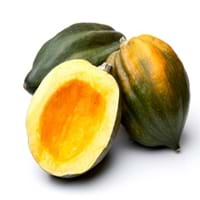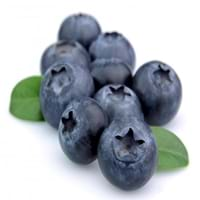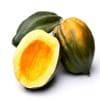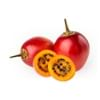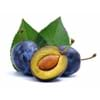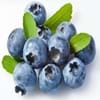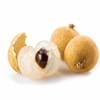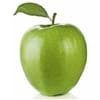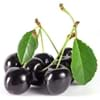Health Benefits
Anti-inflammatory properties, Arthritis treatment, Regulates Blood Sugar
Cancer prevention, Heart care, Increases metabolic rate, Strengthening of bones, Treatment of skin Diseases
General Benefits
Boosts immune system, Controls blood sugar levels, Digestive aid
Anti oxidant properties, Boosts immune system, Digestive aid, Eye care, Improves blood circulation, Sore throat treatment
Skin Benefits
Nourishes skin, Protects skin from oxidative stress
Anti-aging benefits, Reduces wrinkles, Skin rejuvenation, Treatment of skin diseases
Hair Benefits
Prevents hair loss, Promotes longer and healthier hair, Regulates hair growth
Protects hair
Allergy Symptoms
Asthma, Red rash, Swelling of mouth, tongue or lips
Abdominal pains, Coughing, Diarrhea, Itching, Runny nose, Sneezing, Swelling of mouth, tongue or lips, Wheezing
Side Effects
Diarrhoea, Vomiting
Allergic reaction
Best Time to Eat
Along with meal, As a snack in the late afternoon, Don't eat after meal, Eat the fresh ones, avoid mixing with any other foods, don't eat after meal.
Best if taken as a breakfast (or empty stomach), As a snack in the late afternoon, Don't consume at night and before bed, Eat the fresh ones, avoid mixing with any other foods, don't eat after meal., Morning time (before lunch)
Vitamin A (Retinol)
Not Available
Vitamin B5 (Pantothenic Acid)
Not Available
Vitamin B6 (Pyridoxin)
Not Available
Vitamin B9 (Folic acid)
Not Available
Vitamin C (Ascorbic Acid)
Calories in Fresh Fruit with Peel
Calories in Fresh Fruit without Peel
Not Available
Not Available
Calories in Frozen Form
Not Available
Calories in Dried Form
Not Available
Calories in Canned Form
Not Available
Varieties
Bush Table Queen, Heirloom Table Queen, Festival Hybrid, Early Acorn Hybrid, Table Ace, Ebony and Cream of the Crop
Dwarf Huckleberry, Cascade Huckleberry, Mountain huckleberry and Blackwinter Huckleberry
Color
Dark green, Green-yellow, Orange green
Blue, Purple, Purplish black
Inside Color
Yellow
Purple
Origin
Central America, North America, Unknown
North America
Grows on
Vines
Not Available
Soil Type
Well-drained
Loamy, Sandy, Well-drained
Climatic Conditions
Cold, Sunny
Humid, Warm
Facts about
- It was named as Acorn Squash for its resemblance to a large ribbed acorn.
- It is said that squash was being grown in Mexico as long as 10,000 years ago.
- It was the first food cultivated by native American Indians.
- "I'm your huckleberry" is a way of saying that one is just the right person for a given job.
- The phrase "a huckleberry over my persimmon" was used to mean "a bit beyond my abilities".
Top Producer
China
United States of America
Other Countries
Egypt, India, Iran, Italy, Mexico, Russia, Turkey, Ukraine, United States of America
Canada
Top Importer
Costa Rica
Canada
Top Exporter
United States of America
Chile
Botanical Name
Cucurbita Pepo
Gaylussacia brachycera
Synonym
Winter Squash
Not Available
Subkingdom
Tracheobionta
Tracheobionta
Division
Magnoliophyta
Magnoliophyta
Class
Magnoliopsida
Magnoliopsida
Subclass
Dillenhidae
Asteridae
Order
Cucurbitales
Ericales
Family
Cucurbitaceae
Ericaceae
Genus
Cucurbita
Gaylussacia
Species
Pepo
G. brachycera
Generic Group
Not Available
Heath
Compare Acorn squash and Huckleberry
It is important compare Acorn squash and Huckleberry as both the fruits have a different nutritional value. Their comparison can be done on the basis of their vitamin and mineral content, calories, benefits as well as characteristics, making it easier for us to choose the best fruit for our diet. Their general health benefits are as follows:
Acorn squash Benefits: boosts immune system, controls blood sugar levels and digestive aid.
Huckleberry Benefits: anti oxidant properties, boosts immune system, digestive aid, eye care, improves blood circulation and sore throat treatment.
Fruits are also used as a remedy for various hair problems. The hair benefits of Acorn squash are: prevents hair loss, promotes longer and healthier hair and regulates hair growth and hair benefits of Huckleberry are: protects hair. Some fruits are known to cause allergic reactions. The allergy symptoms of first fruit are: asthma, red rash and swelling of mouth, tongue or lips and the symptoms of second fruit are: abdominal pains, coughing, diarrhea, itching, runny nose, sneezing, swelling of mouth tongue or lips and wheezing. Get sorted Acorn squash vs Huckleberry comparison with the help of fruit comparison tool by fruitvs.com.
